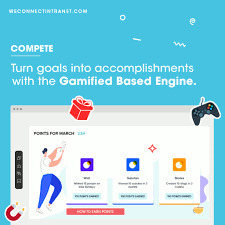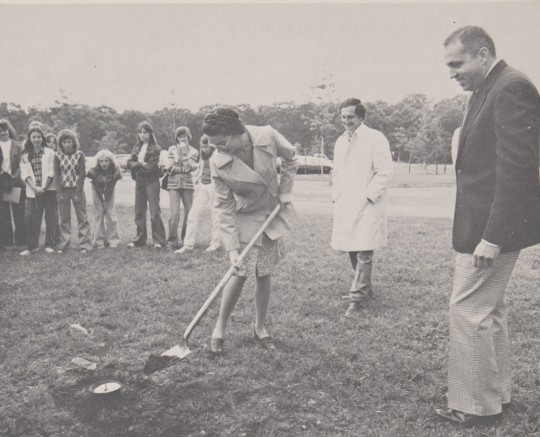#employee communications software
Text
Get now Best Employee Engagement Tools & Platforms.
Assuming that you're uncertain about which representative commitment apparatus is appropriate for you, simply relax — Weconnect Intranet has you covered. Our proficient Innovation Consultants will furnish you with a free, no-bother waitlist of the best employee management solutions and programming for your organization's necessities. Complete the structure in the sidebar or at the highest point of the page to get your free programming suggestions today!
What is Employees engagement platform ? Representative commitment is the personal association which a representative feels towards their association, that impacts their amount of exertion in business related exercises. The principal reason for representative commitment is to establish a workplace where representatives love and care about their work.

Engage each director in your association to further develop worker commitment with continuous bits of knowledge that show them precisely where to concentrate their endeavors to increment representative execution. Weconnect Intranet representative commitment programming stage makes it simple to pinpoint insight, commitment and efficiency drivers, so you can act continuously to make an elite organization culture.
Further develop worker commitment across the association
Act rapidly on continuous information to resolve issues
Perceive what your activities mean for worker work environment efficiency and
hierarchical KPIs
Empower directors with information and activity arranging
Decrease undesirable and expensive wearing down.
Further develop Efficiency
A major piece of connecting with employee for improved efficiency at work lies around perceiving their endeavors and conveying significant compensations to lift their fulfillment levels. With a worker commitment programming suite, pioneers can ensure everybody gets continuous appreciation from both their bosses and companions.

Advance Imagination
Representatives who feel elevated in view of consistent appreciation packaged with other work benefits profoundly associate with their hierarchical objectives and are proactive in producing the smartest thoughts for satisfying them.
Lower Representative Truancy and Turnover Rates
Now an employee communication platform executed over a product stage guarantees that everybody approaches every one of the parts of the program for higher commitment rates that further prompts better worker maintenance and diminished non-appearance at work.
Weconnect Intranet is a representative advantages and markdown stage that permits workers to save while they shop with cash back arrangements and limits. The Weconnect Intranet stage is continually refreshed with corporate intranet platforms from top brands.
#employee communications software#document management solutions#digital workplace tools#hr management software#digital workplace platform
0 notes
Text
The Future of Work: Technology and Remote Collaboration
Introduction
The future of work is rapidly evolving, driven by technological advancements and the increasing popularity of remote collaboration. At TechtoIO, we delve into how these changes are shaping the workplace, impacting productivity, and altering traditional work paradigms. This blog post explores the key technologies enabling remote work and the benefits and challenges associated with this new way of working. Read to continue link
#Innovation Insights#Tagsbenefits of remote work#cloud computing for remote work#communication tools for remote work#cybersecurity for remote work#effective remote collaboration strategies#employee satisfaction remote work#future of remote work#future of work#project management software#remote collaboration#remote collaboration tools#remote team management#remote work challenges#remote work cost savings#remote work innovations#remote work productivity#remote work technology#remote work tools#remote work trends#Technology#Science#business tech#Adobe cloud#Trends#Nvidia Drive#Analysis#Tech news#Science updates#Digital advancements
1 note
·
View note
Text
ERP Based Employee Communication Software
Experience dynamic and secure internal communication with our chat center. Enjoy real-time collaboration, ensure privacy with secure chats, and stay connected across multiple devices. Customize notifications for focused updates and streamline group discussions with topic-focused threads and media sharing capabilities. Boost productivity with task-centric communication and selective membership control. Access detailed message histories, timestamps, and searchable conversations for comprehensive insights and efficient coordination. Elevate your team's communication and collaboration with our intuitive chat center. For more details, visit: https://pierp.software/chat-center
#employee communication software#internal communication software#internal communication apps for business
0 notes
Text
#Community Highlight#ROC United#estaurant#restaurant employees#restaurant technology#restaurant business#restaurant management software
0 notes
Text
How to Protect Your Business From Cyber Threats
Cybersecurity is a major topic every business owner should be discussing. Here is some info from FRC that we hope helps.
Imagine we’re sitting down over a cup of coffee, and you’ve just asked me how to shield your trucking business from the ever-looming shadow of cyber threats. It’s a digital age dilemma, but I’m here to walk you through some straightforward strategies to bolster your defenses.
First off, let’s talk about the elephant in the room: cyber threats. They’re not just a problem for the tech industry;…

View On WordPress
#access control#antivirus software#cloud storage#cyber attacks#cyber threats#cybersecurity#cybersecurity laws#data protection#digital transformation#employee training#encryption#firewalls#incident response#legal compliance#malware#network security#password policies#phishing attacks#ransomware#secure communication#software updates#trucking industry#vendor security#VPN
0 notes
Text
How Does The Employee Life Cycle Affect an Organization?
Throughout the employee life cycle, employees go through distinct phases, each with its own unique challenges, opportunities, and considerations.
#hrmanagement#HR#hrms software#hrms systems#hrms solutions#hrms payroll software#HRM#mangement#employees#employeelifecycle#life cycle#organization#human resources#recruitment#engagement#communication#careerdevelopment#employee relations#education#blog#article
0 notes
Text
5 Best Examples of Employee Onboarding Programs
Example 1: Pre-Onboarding Communication
The journey into a new role begins long before the first day on the job; it's in the anticipatory period leading up to it where the foundation of the onboarding experience is laid. The effectiveness of your pre-onboarding communication process can significantly influence how seamlessly new hires integrate into their roles and the organization at large.
Imagine the potential of turning the usual pre-first-day jitters into a sense of excitement and preparedness. This can be achieved by regularly connecting with your future employees, giving them a peek into what awaits them.
A series of well-crafted emails, for example, could detail what their first day would look like, introduce them to their new team, provide some fun facts about the organization, or share the company's latest success story.
Moreover, you could leverage employee onboarding software to streamline this communication. An interactive onboarding portal, perhaps, could offer a one-stop solution where new hires can explore their job details, understand their roles, complete preliminary paperwork, and even participate in virtual ice-breaking activities. This could range from a simple quiz about the company to a virtual tour of the office.
By ensuring open channels of communication, you set the stage for a robust onboarding experience. It sends a clear message to your new hires: You are valued, we are prepared for your arrival, and we are eager to help you succeed.
Such a nurturing approach to pre-onboarding communication can significantly reduce first-day anxieties and build a strong foundation for a fruitful relationship between the new hires and the organization.
Example 2: Clear and Comprehensive Role Description
One of the pivotal steps in crafting an effective onboarding process is ensuring that your new hires have a crystal-clear understanding of their roles. It might seem like a basic requirement, yet the lack of a well-defined role description can lead to confusion, misalignment, and even frustration for your new team member.
The goal is to move beyond a conventional job description to a comprehensive understanding of how their role fits into the larger organizational puzzle.
This implies elucidating not just the 'what' of their job—the tasks and responsibilities—but also the 'why'—how their contributions tie into the company's objectives and impact its success.
Consider employing interactive sessions or workshops that allow your new hires to delve deeper into their roles. These could include detailed discussions with team leads, exposure to relevant projects, or even shadowing sessions with seasoned employees. Equally crucial is defining performance expectations and success metrics clearly and objectively. This could be further reinforced with regular check-ins during the initial months.
By providing a well-rounded view of their role, you enable new hires to visualize their journey within the organization. This clarity can significantly enhance their sense of purpose, job satisfaction, and engagement levels.
Furthermore, it equips them to contribute effectively and meaningfully from early on, accelerating their transition from being a new hire to a fully integrated team member.
Example 3: A Warm Welcome With A Welcome Kit
The power of a genuine welcome on the first day of work cannot be underestimated. It's the first tangible experience a new hire has with your organization, setting the tone for their tenure.
This warm welcome, coupled with a thoughtful welcome kit, can create an indelible first impression, making your new team members feel truly valued and welcomed.
Begin by creating a warm and personalized welcome experience. Whether it's a cheerful welcome banner, a team breakfast, or a friendly meet-and-greet session, these gestures can infuse a sense of belonging from the get-go. Don't underestimate the value of the simple act of introductions; ensuring that everyone in the team takes the time to personally welcome the newcomer can make a significant difference.
In addition, consider offering a welcome kit tailored to your new hire's needs. This could include practical items like company merchandise, office supplies, or a guidebook with essential details about the organization. You could even add a personal touch by including a handwritten welcome note or local treats. If your organization operates remotely, consider mailing the kit to your new hire's home or providing a digital equivalent filled with useful e-resources.
A warm welcome and a well-curated welcome kit serve as positive reaffirmations of your new hire's decision to join your organization and nurture a strong relationship between your new hires and your company.
Click here to read more - 5 Best Examples of Employee Onboarding Programs

#people management software#employee onboarding software#hr automation software#employee experience management platform#Design Thinking in HR#Peopleops Software#Employee Journey Mapping Tools#Internal Communication Strategy Template
0 notes
Text
#employee engagement#employee rewards#employee recognition#employee experience#employee communication#employee surveys#employee recognition software#employee retention
0 notes
Text
Every company needs a dedicated manager to administer their HR software due to several important reasons. HR software, also known as human resources management systems (HRMS) or human resources information systems (HRIS), plays a crucial role in managing various aspects of an organization's workforce, from recruitment and employee onboarding to performance management and payroll processing. Having a dedicated manager responsible for administering this software ensures its effective implementation, maintenance, and utilization within the company. A dedicated HR software manager brings expertise, organization, and efficiency to the administration of HR software within a company. Their role encompasses system optimization, data management, user support and training, integration and upgrades, compliance management, and vendor relationship management. Having a skilled professional in charge of HR software administration ensures that the system functions effectively, supports HR processes, and contributes to the overall success of the organization.
#transform your workplace#employee satisfaction#employee performance#employee relations#human resources#employee management#employee happiness#human resource management#lanteria hr#hr software#company culture#work environment#workplace culture#employee wellbeing#workplace communication#workplace environment#work environment workplace culture#psychological safety at work#servant leadership#best hr software#hr system
0 notes
Text
POD-Based Team Structure: A Collaborative Approach to Agile Software Development in IT Companies
In the world of IT, project management is crucial for delivering high-quality software products. IT companies use various team structures for project management, and the POD-based team structure is one such structure that has gained popularity in recent years. This structure emphasizes collaboration and cross-functional team members, which can lead to faster decision making, improved…

View On WordPress
#agile methodology#agile project management#collaboration#communication#continuous improvement#cross-functional teams#employee morale#IT companies#Kanban#POD-based team structure#project coordination#project management#project planning#Scrum#software delivery#software development#team building#team dynamics#team productivity#training
1 note
·
View note
Text

LaRue Burbank, mathematician and computer, is just one of the many women who were instrumental to NASA missions.
4 Little Known Women Who Made Huge Contributions to NASA
Women have always played a significant role at NASA and its predecessor NACA, although for much of the agency’s history, they received neither the praise nor recognition that their contributions deserved. To celebrate Women’s History Month – and properly highlight some of the little-known women-led accomplishments of NASA’s early history – our archivists gathered the stories of four women whose work was critical to NASA’s success and paved the way for future generations.
LaRue Burbank: One of the Women Who Helped Land a Man on the Moon
LaRue Burbank was a trailblazing mathematician at NASA. Hired in 1954 at Langley Memorial Aeronautical Laboratory (now NASA’s Langley Research Center), she, like many other young women at NACA, the predecessor to NASA, had a bachelor's degree in mathematics. But unlike most, she also had a physics degree. For the next four years, she worked as a "human computer," conducting complex data analyses for engineers using calculators, slide rules, and other instruments. After NASA's founding, she continued this vital work for Project Mercury.
In 1962, she transferred to the newly established Manned Spacecraft Center (now NASA’s Johnson Space Center) in Houston, becoming one of the few female professionals and managers there. Her expertise in electronics engineering led her to develop critical display systems used by flight controllers in Mission Control to monitor spacecraft during missions. Her work on the Apollo missions was vital to achieving President Kennedy's goal of landing a man on the Moon.
Eilene Galloway: How NASA became… NASA

Eilene Galloway wasn't a NASA employee, but she played a huge role in its very creation. In 1957, after the Soviet Union launched Sputnik, Senator Richard Russell Jr. called on Galloway, an expert on the Atomic Energy Act, to write a report on the U.S. response to the space race. Initially, legislators aimed to essentially re-write the Atomic Energy Act to handle the U.S. space goals. However, Galloway argued that the existing military framework wouldn't suffice – a new agency was needed to oversee both military and civilian aspects of space exploration. This included not just defense, but also meteorology, communications, and international cooperation.
Her work on the National Aeronautics and Space Act ensured NASA had the power to accomplish all these goals, without limitations from the Department of Defense or restrictions on international agreements. Galloway is even to thank for the name "National Aeronautics and Space Administration", as initially NASA was to be called “National Aeronautics and Space Agency” which was deemed to not carry enough weight and status for the wide-ranging role that NASA was to fill.
Barbara Scott: The “Star Trek Nerd” Who Led Our Understanding of the Stars

A self-described "Star Trek nerd," Barbara Scott's passion for space wasn't steered toward engineering by her guidance counselor. But that didn't stop her! Fueled by her love of math and computer science, she landed at Goddard Spaceflight Center in 1977. One of the first women working on flight software, Barbara's coding skills became instrumental on missions like the International Ultraviolet Explorer (IUE) and the Thermal Canister Experiment on the Space Shuttle's STS-3. For the final decade of her impressive career, Scott managed the flight software for the iconic Hubble Space Telescope, a testament to her dedication to space exploration.
Dr. Claire Parkinson: An Early Pioneer in Climate Science Whose Work is Still Saving Lives

Dr. Claire Parkinson's love of math blossomed into a passion for climate science. Inspired by the Moon landing, and the fight for civil rights, she pursued a graduate degree in climatology. In 1978, her talents landed her at Goddard, where she continued her research on sea ice modeling. But Parkinson's impact goes beyond theory. She began analyzing satellite data, leading to a groundbreaking discovery: a decline in Arctic sea ice coverage between 1973 and 1987. This critical finding caught the attention of Senator Al Gore, highlighting the urgency of climate change.
Parkinson's leadership extended beyond research. As Project Scientist for the Aqua satellite, she championed making its data freely available. This real-time information has benefitted countless projects, from wildfire management to weather forecasting, even aiding in monitoring the COVID-19 pandemic. Parkinson's dedication to understanding sea ice patterns and the impact of climate change continues to be a valuable resource for our planet.
Make sure to follow us on Tumblr for your regular dose of space!
#NASA#space#tech#technology#womens history month#women in STEM#math#climate science#computer science
2K notes
·
View notes
Text
Take Advantage Of Employee Engagement Software.
An association ought to utilize all suitable roads of correspondence like digital workplace solutions answers for make a bound together labor force. To accomplish that the association should perceive collaboration, their commitment, appreciate them when quality is conveyed and inspire them to take jumps past the standard . A group that realizes their work is esteemed would prompt proactiveness, efficiency, and a more joyful workplace as employee engagement software. So, you really want a strong interior correspondence plan. We should perceive how to go about it.
1. Plan The Arrangement
Think about your partners and workers. Run a review. Figure out what data they need. Map the hole regions. Dive into the difficulties they face with their everyday correspondence. Whenever you have collected the information, make an arrangement with clear goals. Fix timetables, obligations, and significant targets for better worker correspondence.
2. Incorporate Them All
Your interior correspondence plan ought to address problem areas for each group so they feel included. There ought to be space for departmental targets, improvement of everyday expectations, and critical thinking way to deal with keep the workers educated and locked in.

3. Level It Up
Another correspondence plan should be checked by a serious main thrust. It ought to be strictly followed and executed by every one of the partners, directors, and workers. Everybody ought to get the obligation including the HR group for the execution and IT group to help the intranet stage for smooth advanced work environment experience.

4. Keep The Equilibrium
At times fundamental data could get passed in a gathering however the dependable individual passed up steering out by means of the intranet. This ought not be polished by any stretch of the imagination. There must be a balance of inner and outside correspondence. All that connected with late changes ought to be conveyed through an employee management platform to keep everybody refreshed. You will save a ton of time and exertion in the event that you think about your intranet a significant wellspring of correspondence.
#digital workplace solutions#digital workplace platform#employee engagement software#employee communications software#employee communication platform
0 notes
Link
Improve messaging, file-sharing, conversations, and collaboration among team members through the best employee communication apps. Find the list of the top software
#employee communication software#employee communication platform#employee communication process#employee communication systems
0 notes
Text
Hi, FR tag! In light of the recent tumblr drama, I wanted to call attention to a report by a former tumblr employee about tumblr potentially beginning to sell user data to Midjourney (the AI image software company). FR tumblr is full of artists who've been sharing dozens of pieces of art daily for over a decade, and so this post is to help get the word out about this decision in advance.
As of writing this post (February 21, 2024), this has not yet been implemented. No data is being sold to Midjourney at this time. This post is to raise awareness to allow artists in the community time to determine what their next steps are. There is the possibility that tumblr never follows through with this, but there's also the possibility that they will. We also currently do not have information about what this decision will entail if it does go through, if it's opt-in only, etc.
The FR community here on tumblr is incredibly precious to me. I'm saddened and frustrated by tumblr's decisions. Please reblog this post and feel free to use it as a springboard for discussions, posting other socials, or anything else the community might need.
#flight rising#i don't know what this decision will mean for like... non-art fr content that gets posted to tumblr#like sharing images from fr directly
290 notes
·
View notes
Note
What is the appeal of vintage computers to you? Is it the vintage video games or is it the programs? If so, what kind of programs do you like to run on them?
Fair warning, we're talking about a subject I've been passionate about for most of my life, so this will take a minute. The answer ties into how I discovered the hobby, so we'll start with a few highlights:
I played old video games starting when I was 9 or 10.
I became fascinated with older icons buried within Windows.
Tried to play my first video game (War Eagles) again at age 11, learned about the hardware and software requirements being way different than anything I had available (a Pentium III-era Celeron running Windows ME)
I was given a Commodore 1541 by a family friend at age ~12.
Watched a documentary about the history of computers that filled in the gaps between vague mentions of ENIAC and punch cards, and DOS/Windows machines (age 13).
Read through OLD-COMPUTERS.COM for the entire summer immediately after that.
Got my first Commodore 64 at age 14.
I mostly fell into the hobby because I wanted to play old video games, but ended up not finding a ton of stuff that I really wanted to play. Instead, the process of using the machines, trying the operating system, appreciating the aesthetic, the functional design choices of the user experience became the greater experience. Oh, and fixing them.
Then I started installing operating systems on some DOS machines, or playing with odd peripherals, and customizing hardware to my needs. Oh, and programming! Mostly in BASIC on 8-bit hardware, but tinkering with what each computer could do is just so fascinating to me. I'm in control, and there isn't much of anything between what I write and the hardware carrying it out (especially on pre-Windows machines)! No obfuscation layers, run-times, .dlls, etc. Regardless of the system, BASIC is always a first choice for me. Nova, Ohio Scientific, Commodore, etc. I usually try to see what I can do with the available BASIC dialect and hardware. I also tend to find a game or two to try, especially modern homebrew Commodore games because that community is always creating something new. PC stuff I focus more on pre-made software of the era.
Just to name a few examples from a variety of systems: Tetris, terminal emulators, Command & Conquer titles, screen savers, War Eagles, Continuum, video capture software, Atomic Bomberman, demos, LEGO Island, Bejeweled clones, Commander Keen 1-3, lunar lander, Galaxian, sinewave displays, 2048, Pacman, mandelbrot sets, war dialers, paint -- I could keep going.
Changing gears, I find it funny how often elders outside of the vintage computing community would talk about the era I'm interested in (60s-early 90s). [spoken with Mr. Regular's old man voice]: "Well, computers used to be big as a room! And we used punch cards, and COBOL!" I didn't know what any of that meant, and when pressed for technical detail they couldn't tell you anything substantial. Nobody conveyed any specifics beyond "that's what we used!"
I noticed that gaps remained in how that history was presented to me, even when university-level computer science and history professors were engaged on the subject. I had to go find it on my own. History is written by the victors, yeah? When was the last time a mainstream documentary or period piece focused on someone other than an Apple or Microsoft employee? Well, in this case, you can sidestep all that and see it for yourself if you know where to look.
Experiencing the history first hand to really convey how computers got from point A to B all the way down to Z is enlightening. What's cool is that unlike so many other fields of history, it's near enough in time that we can engage with people who were there, or better yet, made it happen! Why do you think I like going to vintage computer festivals?
We can see the missteps, the dead-ends, the clunkiness, the forgotten gems and lost paradigms, hopefully with context of why it happened. For the things we can't find more information on, when or documentation and perspectives are limited, sometimes we have to resort to digital archeology, and reverse engineering practices to save data, fix machines, and learn how they work. The greater arc of computer history fascinates me, and I intend to learn about it by fixing and using the computers that exemplify it best, and sharing that passion with others who might enjoy it.
168 notes
·
View notes
Note
What objections would you actually accept to AI?
Roughly in order of urgency, at least in my opinion:
Problem 1: Curation
The large tech monopolies have essentially abandoned curation and are raking in the dough by monetizing the process of showing you crap you don't want.
The YouTube content farm; the Steam asset flip; SEO spam; drop-shipped crap on Etsy and Amazon.
AI makes these pernicious, user hostile practices even easier.
Problem 2: Economic disruption
This has a bunch of aspects, but key to me is that *all* automation threatens people who have built a living on doing work. If previously difficult, high skill work suddenly becomes low skill, this is economically threatening to the high skill workers. Key to me is that this is true of *all* work, independent of whether the work is drudgery or deeply fulfilling. Go automate an Amazon fulfillment center and the employees will not be thanking you.
There's also just the general threat of existing relationships not accounting for AI, in terms of, like, residuals or whatever.
Problem 3: Opacity
Basically all these AI products are extremely opaque. The companies building them are not at all transparent about the source of their data, how it is used, or how their tools work. Because they view the tools as things they own whose outputs reflect on their company, they mess with the outputs in order to attempt to ensure that the outputs don't reflect badly on their company.
These processes are opaque and not communicated clearly or accurately to end users; in fact, because AI text tools hallucinate, they will happily give you *fake* error messages if you ask why they returned an error.
There's been allegations that Mid journey and Open AI don't comply with European data protection laws, as well.
There is something that does bother me, too, about the use of big data as a profit center. I don't think it's a copyright or theft issue, but it is a fact that these companies are using public data to make a lot of money while being extremely closed off about how exactly they do that. I'm not a huge fan of the closed source model for this stuff when it is so heavily dependent on public data.
Problem 4: Environmental maybe? Related to problem 3, it's just not too clear what kind of impact all this AI stuff is having in terms of power costs. Honestly it all kind of does something, so I'm not hugely concerned, but I do kind of privately think that in the not too distant future a lot of these companies will stop spending money on enormous server farms just so that internet randos can try to get Chat-GPT to write porn.
Problem 5: They kind of don't work
Text programs frequently make stuff up. Actually, a friend pointed out to me that, in pulp scifi, robots will often say something like, "There is an 80% chance the guards will spot you!"
If you point one of those AI assistants at something, and ask them what it is, a lot of times they just confidently say the wrong thing. This same friend pointed out that, under the hood, the image recognition software is working with probabilities. But I saw lots of videos of the Rabbit AI assistant thing confidently being completely wrong about what it was looking at.
Chat-GPT hallucinates. Image generators are unable to consistently produce the same character and it's actually pretty difficult and unintuitive to produce a specific image, rather than a generic one.
This may be fixed in the near future or it might not, I have no idea.
Problem 6: Kinetic sameness.
One of the subtle changes of the last century is that more and more of what we do in life is look at a screen, while either sitting or standing, and making a series of small hand gestures. The process of writing, of producing an image, of getting from place to place are converging on a single physical act. As Marshall Macluhan pointed out, driving a car is very similar to watching TV, and making a movie is now very similar, as a set of physical movements, to watching one.
There is something vaguely unsatisfying about this.
Related, perhaps only in the sense of being extremely vague, is a sense that we may soon be mediating all, or at least many, of our conversations through AI tools. Have it punch up that email when you're too tired to write clearly. There is something I find disturbing about the idea of communication being constantly edited and punched up by a series of unrelated middlemen, *especially* in the current climate, where said middlemen are large impersonal monopolies who are dedicated to opaque, user hostile practices.
Given all of the above, it is baffling and sometimes infuriating to me that the two most popular arguments against AI boil down to "Transformative works are theft and we need to restrict fair use even more!" and "It's bad to use technology to make art, technology is only for boring things!"
32 notes
·
View notes